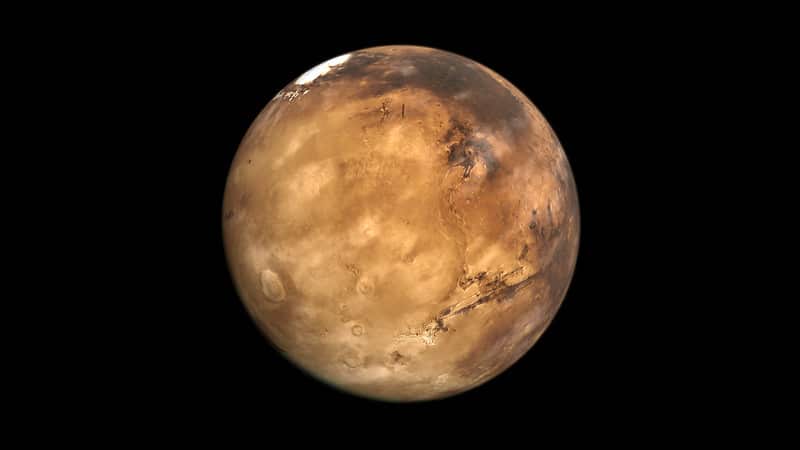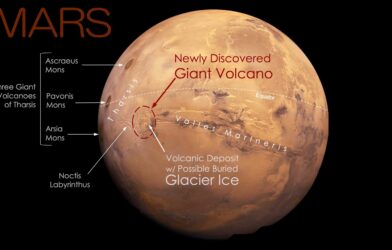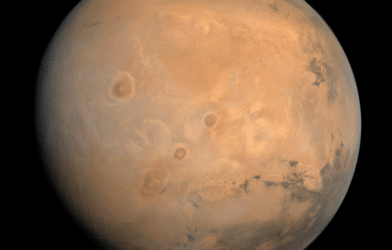Mars is still full of surprises. Scientists are sharing astonishing discoveries that defied expectations about the Red Planet. Analyzing seismic data from NASA’s Mars InSight mission, researchers found that the top 300 meters of the subsurface beneath the landing site near the Martian equator contains little or no ice.
The Insight spacecraft landed on Elysium Planitia in 2018. The area is a flat, smooth, plain near the Martian equator.
“We find that Mars’ crust is weak and porous. The sediments are not well-cemented. And there’s no ice or not much ice filling the pore spaces,” says study co-author Vashan Wright, a geophysicist at Scripps Institution of Oceanography at the University of California San Diego, in a media release. “These findings don’t preclude that there could be grains of ice or small balls of ice that are not cementing other minerals together. The question is how likely is ice to be present in that form?”
The second surprise refutes the idea that much of the water on Mars became part of the minerals that make up underground cement.

“If you put water in contact with rocks, you produce a brand-new set of minerals, like clay so the water’s not a liquid. It’s part of the mineral structure,” says study co-author Michael Manga, professor and chair of Earth and planetary science at the University of California Berkeley. “There is some cement, but the rocks are not full of cement.”
Wright adds, “Water may also go into minerals that do not act as cement. But the incremented subsurface removes one way to preserve a record of life or biological activity.”
Cements hold rocks and sediments together. It also protects them from destructive erosion. With the lack of cemented sediments, scientists believe there’s a water scarcity in the 300 meters below InSight’s landing site near the equator. Many planetary scientists surmised that the Martian subsurface would be full of ice, but that’s not the case. However, large ice sheets and frozen ground ice remain at the Martian poles.
“As scientists, we’re now confronted with the best data, the best observations. And our models predicted that there should still be frozen ground at that latitude with aquifers underneath,” notes Manga.
InSight’s seismometer measures vibrations caused by marsquakes and crashing meteorites. Data from the surface of Mars suggests that the subsurface might consist of sedimentary rock and lava flows, but scientists still had to account for uncertainties about subsurface properties like porosity and mineral content. Scientists ended up applying rock physics computer modeling to interpret the velocities derived from the InSight data.
“We ran our models 10,000 times each to get the uncertainties incorporated into our answers,” explains study co-author Richard Kilburn, a graduate student working in the Scripps Tectonorockphysics Lab. The model revealed that the subsurface consists mostly of incremented material.
If life does exist on Mars, it would be in the subsurface as subsurface life would be protected from radiation. Over the next decade, NASA’s priority is the Mars Life Explorer mission concept. The space agency wants to drill two meters into Mars’ crust at high latitude to search for life where ice, rock and the atmosphere come together.
The study is published in the journal Geophysical Research Letters.












